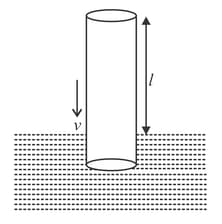MEDIUM
Earn 100
In an experiment of resonance tube, first resonance occurs at from the open end of the tube. End correction of the tube is and the frequency of tuning fork is
(a)Velocity of sound is
(b)Next resonance will occur at
(c)Next resonance will occur at
(d)Radius of resonance tube is
50% studentsanswered this correctly
Important Questions on Superposition of Waves
MEDIUM
EASY
EASY
HARD
(Velocity of sound in air is )
MEDIUM
EASY
HARD
HARD
HARD
HARD
Explain the formation of stationary waves in an air column enclosed in open pipe. Derive the equations for the frequencies of the harmonics produced.
An open organ pipe long is sounded. If the velocity of sound is , what is the fundamental frequency of vibration of the air column?
HARD
MEDIUM
HARD
MEDIUM
MEDIUM
MEDIUM
EASY
An open pipe of sufficient length is being dipped in water with a speed vertically. If at any instant is the length of the tube above water. Then the rate at which fundamental frequency of pipe changes, is (speed of sound = )

EASY
MEDIUM
Represent the union of two sets by Venn diagram for each of the following.
is a prime number between and
is an odd number between and
EASY

